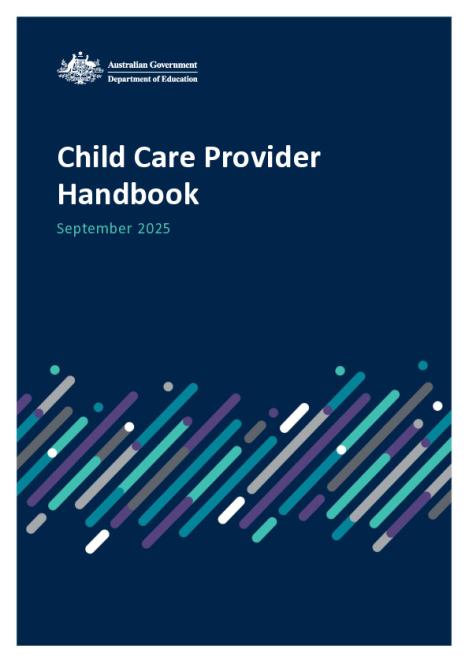Printable version of the Child Care Provider Handbook.
- Creation Date
-
- Modified date
-
- FOI Reference
-
EDU18/3528
- Stream
-
Early Childhood
- Creator
-
Department of Education
- Publisher
-
Department of Education
- Publication Category
-
Departmental document
- Audience
-
Child care providers
- Language
-
English / Australian English
- Coverage
-
Australia
We aim to provide documents in an accessible format. If you're having problems accessing a document, please contact us for help.

